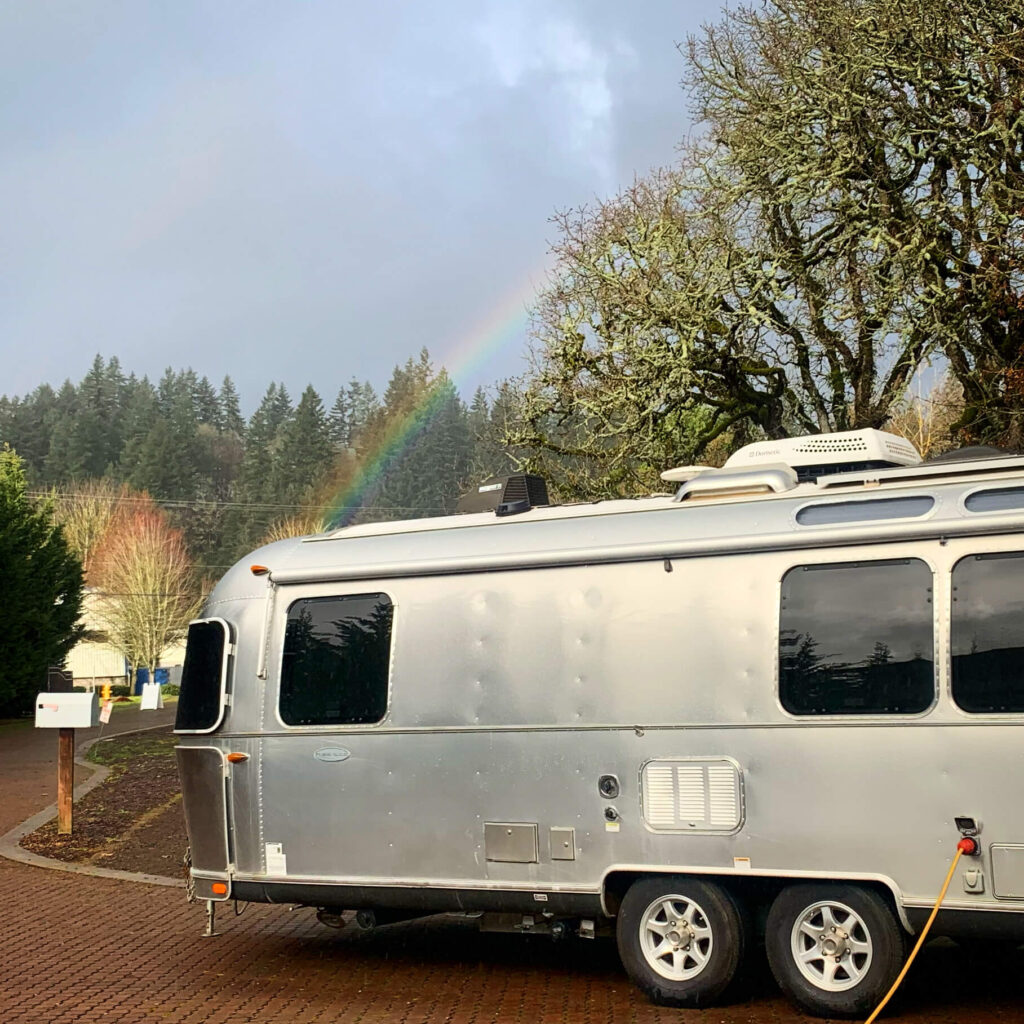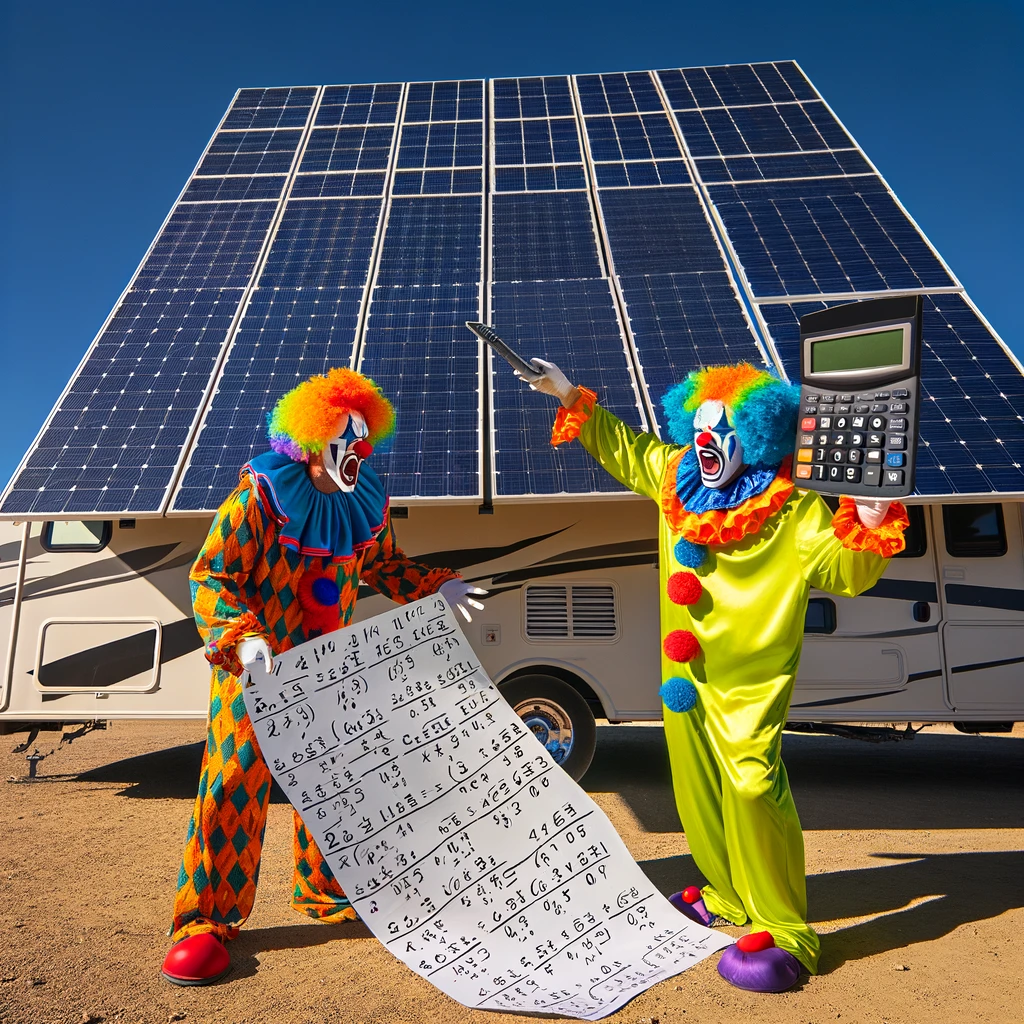Has a dead starter RV battery ever complicated your camping experience? If the answer is “yes”, don’t get too down on yourself.
This is a tale as old as boondocking, and you are surely not the first to experience this.
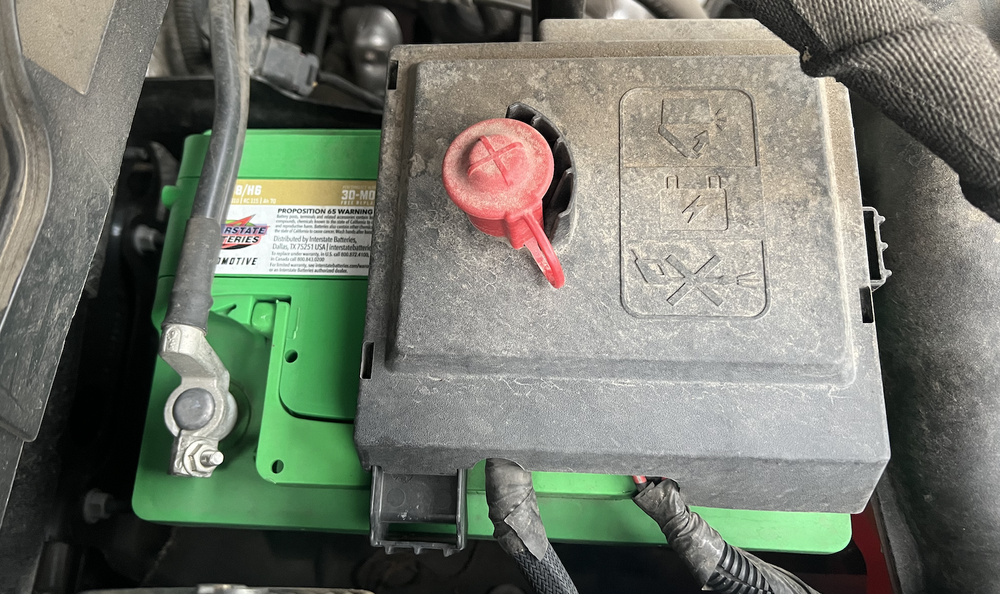
To get started, let’s make sure we are all on the same page with our terminology:
Chassis Battery, Engine Battery, Starter Battery – These terms are all used to describe the battery that starts the vehicle’s ignition.
House Battery, Coach Battery, Auxiliary Battery – These terms describe the battery that runs most of the RV’s loads. It is frequently a LiFePO4 battery.
While boondocking can be a great way to experience nature, it also comes with its own set of challenges. One of the most important of these is battery management when it comes to your solar setup. Without a reliable power supply, your RV’s starter battery will slowly drain over time. This can lead to premature battery power failure and the need for costly replacements. Regular maintenance can help avoid these difficulties.
The best way to avoid this problem is to trickle charge your starter battery while boondocking. Trickle charging is the process of charging your battery at a slow, steady rate, over a long period of time. This keeps the battery at its optimal charge level and helps avoid damage from overcharging. It also helps to extend your battery life by keeping it from becoming overly discharged. With a reliable battery, you won’t have to worry about that battery dying when you need it most.
Trickle charging is important for any type of RV with a starter battery (not trailers or 5th Wheels) but it’s especially important while boondocking. AM Solar has several products designed to maintain your starter battery in your solar system. Let’s review a few of our favorites.
Victron 230A Cyrix Battery Combiner
The Victron Cyrix Battery Combiner comes in different sizes with built-in voltage trigger points and time delays. This device is designed to connect two battery banks, with the same or different battery chemistry. Our most common designs utilize the 230A Cyrix-Li-ct (Lithium) or 230A Cyrix-ct (AGM) relay as a “gatekeeper” between your house battery bank and your starter battery and/or chassis alternator charging system. When a charge is applied to either battery bank, the voltage of that battery bank will rise, and the elevated voltage will trigger the Cyrix relay to close, connecting the two battery banks in parallel. Depending on the voltage, the connection may be instant or delayed. Since the Cyrix only closes the connection between battery banks when a charge is applied to one or both battery banks, it doubles as a means to prevent unwanted lithium back-flow into your starter battery when no batteries are charging. The result is that your alternator can charge your house battery bank, and solar or shore power can charge your starter battery.
Pros:
-The Cyrix is easy to implement. It is one device and doesn’t require programming.
-A manual override gives the user Boost functionality, allowing the house battery bank to start the ignition.
Cons:
-The Cyrix is not compatible with all battery banks or alternators.
-The Cyrix may only charge a house battery bank up to about 80%, whereas a DC/DC charger like an Orion, has the potential to take the battery bank to 100% State of Charge.
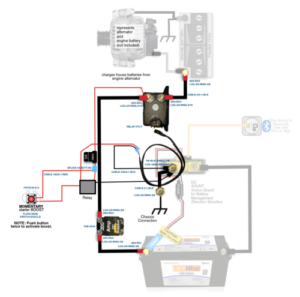
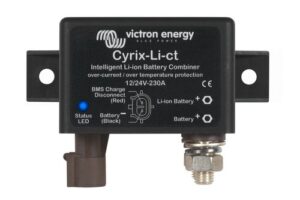
Battery Combiner for Drop-In Lithium
from $415.00
Victron Cyrix Battery Combiner
from $75.65
Magnum Smart Battery Combiner
The Magnum Smart Battery Combiner (ME-SBC) is designed to monitor and charge a second battery using a portion of the current that is charging a main battery. Once installed, it will transfer up to 25A of DC charge between battery banks, to ensure that both batteries are healthy after long periods of boondocking. The ME-SBC has a low-profile design, a small footprint, and adjustable voltage setpoints which make it easy to install, program, and maintain. In AM Solar kits, this unit is frequently integrated with a Victron Orion DC to DC charger. With this technology, you can rest assured that your batteries will be charged and ready to go, even when you are off the grid.
Pros:
-Programming of the ME-SBC allows for greater design flexibility and control.
Cons:
-The ME-SBC can be difficult to source.
-The complexity of this kit in some applications makes a Do-It-Yourself implementation very difficult.
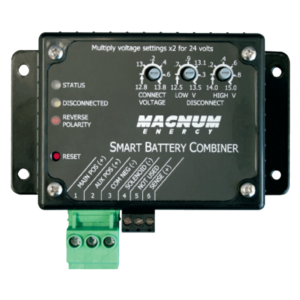
Magnum Smart Battery Combiner
$105.00
Bi-Directional Victron Orion DC to DC Charging Kit
The Victron Orion DC to DC charger series is a versatile group of chargers that fulfill a variety of needs within the realm of mobile power system designs. Most of our customers with Orion DC to DC charger(s), are using the unit to charge their house lithium battery bank with their vehicle’s alternator while on the road.
While the 12|12 18A kit, 12|12 30A kit, and Dual Orion 60A kit are staples for most of our customers, we also offer a Bi-Directional Orion kit, which leverages two opposite-facing Orion charging systems to ensure that your starter battery is trickle charged when your ignition is off, and your house battery bank is fully charged.
The “primary” Orion DC to DC charger(s) in this kit will be using incoming alternator current (engine is running) to feed your house lithium (or AGM) battery bank. This allows a traditional alternator to properly charge a lithium battery up to 100% SOC. The Orion(s) in this orientation are designed to deliver as much current as the alternator (or the owner’s budget) can handle.
The “secondary” Orion DC to DC charger is typically the 18A model, which will send a smaller amount of current (a trickle) from the house battery bank to the starter battery. An ignition signal-controlled relay makes sure the two sets of Orions are not active at the same time, which would create an unwanted current loop.
Programming of the Orions prevents overcharging and overly discharging either battery bank.
Pros:
-The parts are easy to source.
-The system is compatible with nearly every battery or alternator type.
-A great solution when the starter and house battery banks have different voltages.
Cons:
-The design is complex and requires programming.
-The system is relatively expensive.
-The complexity of this kit makes a Do-It-Yourself implementation very difficult.
-18A is usually more than most users need.

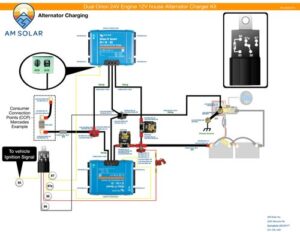
TRIK-L-START / AMP-L-START
A TRICK-L-START only works between lead-acid batteries and delivers 5A to the starter battery when the voltage of the house battery bank goes above 13.2V. There are three connections on the device, one to each battery bank positive, and one to the chassis negative. The AMP-L-START is more complex and can deliver 15A. It can work with lithium or lead-acid batteries.
Pros:
-The kits are easy to install.
-The TRIK-L-START operated smoothly.
-The price is very competitive.
Cons:
-We don’t believe these are being manufactured anymore and they are hard to find.
-The AMP-L-START had an “Anti-Chatter” feature that prevented it from turning on more than once in 10 minutes, which made testing very difficult.
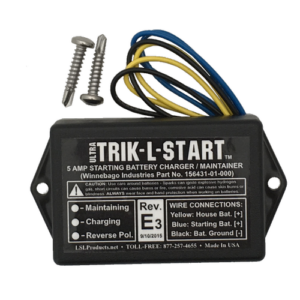
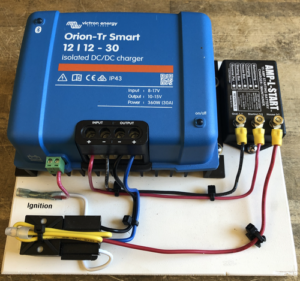
If you’d like to learn more about maintaining your starter battery while boondocking, our sales team is ready to discuss which options would work best with your system and power needs. Fill out a quote request for recommendations tailored to your RV lifestyle.
Learn more:
